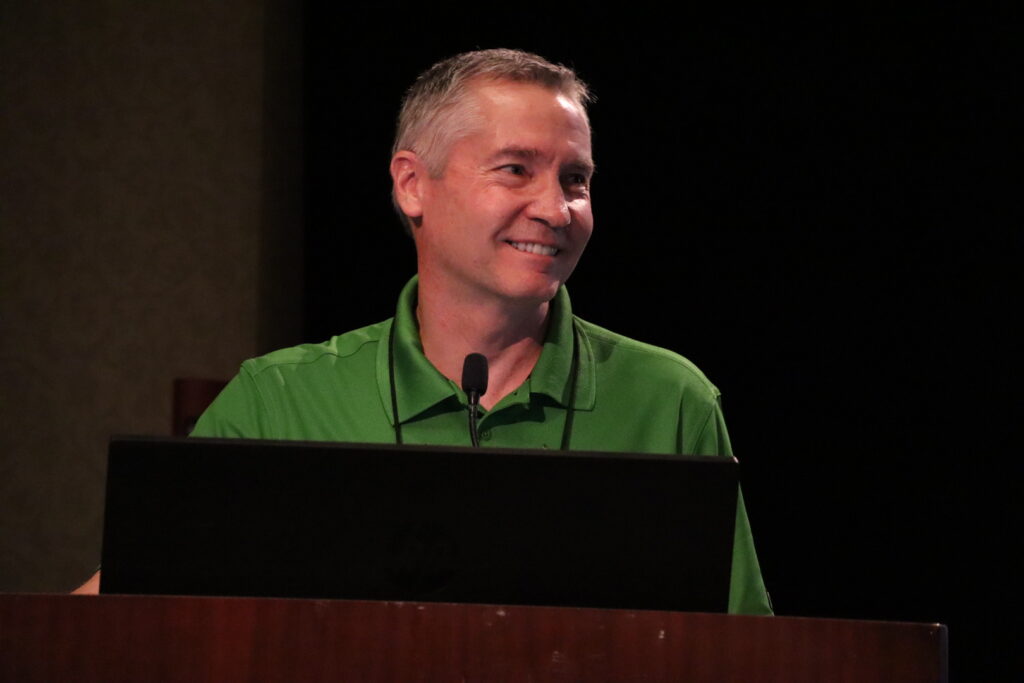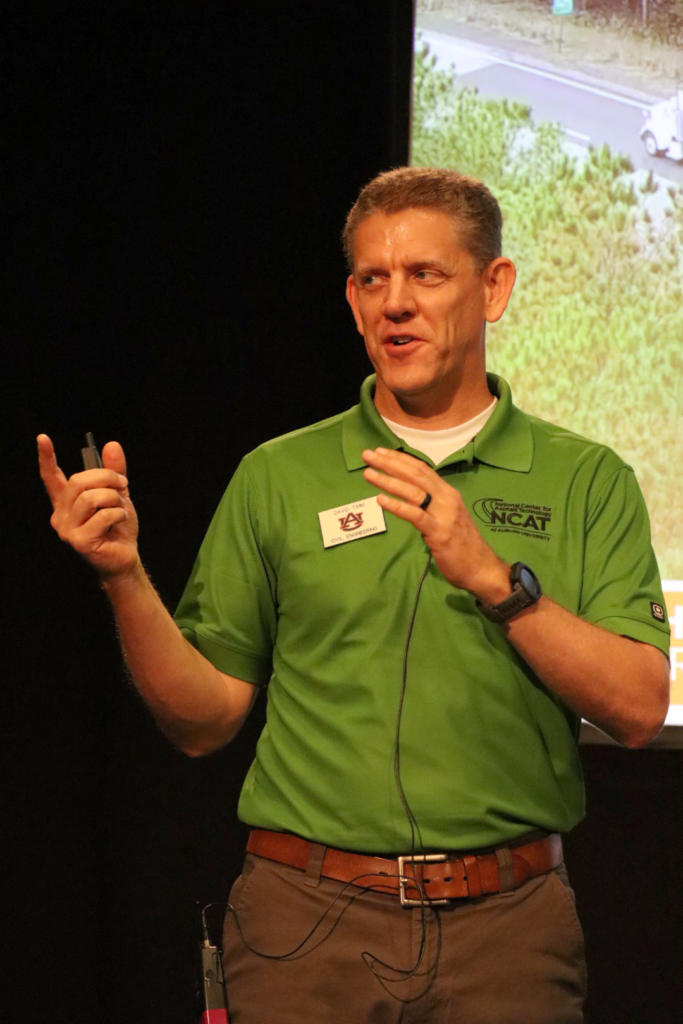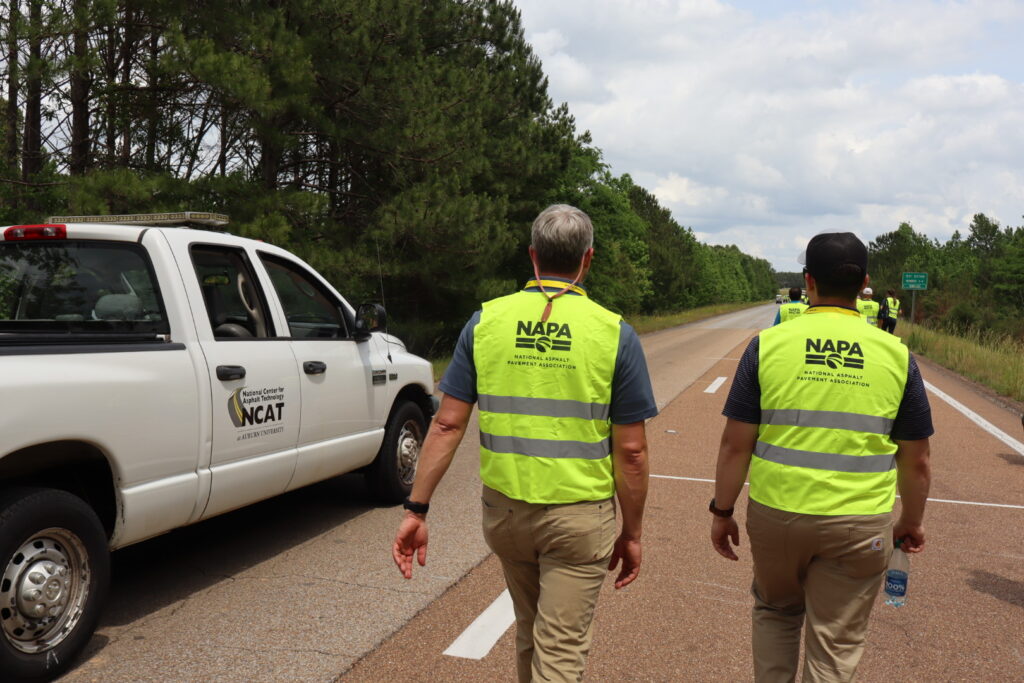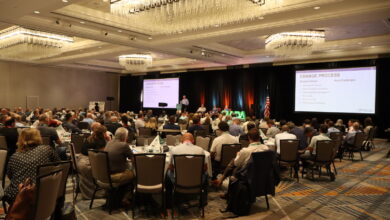NCAT Test Track Conference marks end of 8th research cycle
Stakeholders from across the asphalt pavement industry are in Auburn, Alabama this week for the Test Track Conference, hosted by Auburn University’s National Center for Asphalt Technology (NCAT).

State departments of transportation and several NAPA member companies sent representatives to learn alongside NCAT’s vaunted teaching faculty as they work with graduate students and DOTs to compile and analyze data from the 8th research cycle at the Test Track. The outdoor asphalt pavement laboratory is a 1.7-mile oval track with sponsored test sections from state DOTs and private partners where a decade of traffic is simulated by weighted down trucks that stress-test the pavement sections, which are evaluated weekly for performance.
In his opening remarks, NCAT Director Randy West noted that the NCAT trucks crossed the 11-million-mile threshold during the most recent research cycle; roughly the equivalent of driving around the world 440 times.

NAPA Vice President for Engineering, Research, and Technology Richard Willis kicked off the Conference with a keynote on his experience with research at NCAT in which he challenged attendees to rethink their attitudes about failure.
“If you’re not failing, you’re not innovating enough,” Willis said, paraphrasing trailblazer Elon Musk.
NCAT’s Dave Timm discussed two test sections — a stabilized subgrade section sponsored by the Mississippi DOT and a second section constructed through thick-lift paving and sponsored by the South Carolina DOT. Fan Yin led a discussion on the Texas DOT section focused on evaluating the benefits of balanced mix design (BMD) in relation to volumetrics.

Nam Tran spoke about a recycling agent pioneered by Cargill that could reduce the use of virgin binder and improve compaction in mixes including reclaimed asphalt pavement (RAP), followed by a discussion from Ben Bowers on cold central plant recycling that evaluated a pavement that was constructed twice with recycled materials.
Attendees participated in a tour of the Test Track in the early afternoon where they could see the very test sections that were being discussed in the conference and ask questions of the experts as they pointed out the testing methods and results of three years of research.
Chen Chen explained that open graded friction courses (OGFC) in Alabama are evaluated in a similar manner to BMD as contractors are aiming to balance permeability with durability.


Nathan Moore, NCAT’s newly hired Test Track Director, discussed a project from the Kentucky Transportation Cabinet that centered on friction. He said the Cabinet theorizes that a 10-point increase in friction could result in a 10 percent reduction in crashes and state savings of up to $1.4 billion.
Raquel Moraes concluded Day 1 with an examination of a Mississippi DOT test section which was sprayed with surface rejuvenator, which was found to affect friction.




